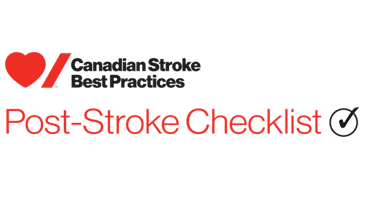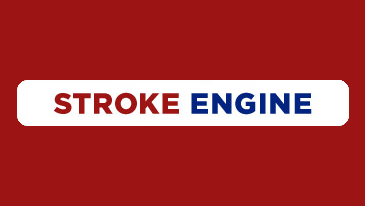- Definitions
- Core Elements of Delivery of Secondary Stroke Prevention Services
- 1. Triage and Initial Diagnostic Evaluation of Transient Ischemic Attack and Non-Disabling Stroke
- 2. Lifestyle and Risk Factor Management
- 3. Blood Pressure and Stroke Prevention
- 4. Lipid Management
- 5. Diabetes and Stroke
- 6. Anti-platelet Therapy in Ischemic Stroke and TIA
- 7. Anticoagulation for Individuals with Stroke and Atrial Fibrillation
- 8. Perioperative Management of Anticoagulant and Antiplatelet Therapy
- 9. Management of Extracranial Carotid Disease and Intracranial Atherosclerosis
- 10. Cardiac Issues in Individuals with Stroke
- 11. Cancer Associated Ischemic Stroke
6. Antiplatelet Therapy for Ischemic Stroke and Transient Ischemic Attack
7th Edition – 2020 UPDATED
6.1 Acute Antiplatelet Therapy
- All patients with acute ischemic stroke or transient ischemic attack not already on an antiplatelet agent should be treated with at least 160 mg of acetylsalicylic acid immediately as a one-time loading dose after brain imaging has excluded intracranial hemorrhage [Evidence Level A].
- For patients with dysphagia, acetylsalicylic acid (80 mg daily) or clopidogrel (75 mg daily) may be administered by enteral tube or acetylsalicylic acid by rectal suppository (325 mg daily) [Evidence Level A]. Note acetylsalicylic acid should only be administered orally once dysphagia screening has been performed and indicates absence of potential dysphagia.
- Antiplatelet therapy should be started as soon as possible after brain imaging has excluded hemorrhage, within 24 hours of symptom onset (ideally within 12 hours) [Evidence Level B].
- For patients receiving intravenous thrombolysis therapy, avoid antiplatelet therapy within the first 24 hours; antiplatelet therapy could then be initiated after brain imaging has excluded secondary hemorrhage [Evidence Level B].
- For transient ischemic attack or minor ischemic stroke patients who are being discharged from the emergency department, antiplatelet therapy should be started prior to discharge [Evidence Level C].
For ongoing antiplatelet therapy, refer to Section 6.2. Refer to CSBPR Acute Stroke Management Module Section 7 for additional information.
6.2 Antiplatelet Therapy for Secondary Stroke Prevention
Note: These recommendations are applicable to ischemic stroke and transient ischemic attack.
- For patients with ischemic stroke or transient ischemic attack, antiplatelet therapy is recommended for long-term secondary stroke prevention to reduce the risk of recurrent stroke and other vascular events unless there is an indication for anticoagulant therapy [Evidence Level A].
- Antiplatelet therapy should be started as soon as possible after brain imaging has excluded hemorrhage, within 24 hours of symptom onset (ideally within 12 hours) [Evidence Level B].
- For long-term secondary stroke prevention, either acetylsalicylic acid (80 mg – 325 mg daily), or clopidogrel (75 mg daily), or combined acetylsalicylic acid and extended-release dipyridamole (25mg/200 mg BID), are all appropriate treatment options and selection depends on patient factors or clinical circumstances [Evidence Level A]
6.2.1 Short-Term Dual Antiplatelet Therapy for Secondary Stroke Prevention - For patients with an acute high-risk transient ischemic attack or minor ischemic stroke of non-cardioembolic origin (NIHSS 0-3), who are not at high bleeding risk, dual antiplatelet therapy is recommended with clopidogrel 75 mg daily plus acetylsalicylic acid 81 mg daily for a duration of 21 days after the event, followed by antiplatelet monotherapy thereafter (acetylsalicylic acid or clopidogrel alone) [Evidence Level A].
- (REVISED for 2020): Dual antiplatelet therapy for longer than the first 21 days following a transient ischemic attack or minor stroke is not recommended unless there is a specific indication (e.g., arterial stent; symptomatic intracranial artery stenosis), due to an increased risk of bleeding without clear benefit beyond 21 days [Evidence Level B]. Patients should be counseled that dual antiplatelet therapy with acetylsalicylic acid and clopidogrel should continue for only 21 days, followed by antiplatelet monotherapy to be continued indefinitely.
- A single loading dose of clopidogrel (either 300 mg (CHANCE trial) or 600 mg (POINT trial)) and acetylsalicylic acid (160 mg - 325 mg) should be administered at the start of treatment [Evidence Level A].
- (NEW FOR 2020): Another reasonable short-term dual antiplatelet treatment option is the combination of daily low-dose acetylsalicylic acid plus ticagrelor (180 mg loading dose, followed by 90 mg bid) for 30 days [Evidence Level B].
- (NEW FOR 2020):: For patients with a recent stroke or transient ischemic attack due to symptomatic intracranial atherosclerotic stenosis of 70-99%, and a low estimated bleeding risk, the SAMMPRIS protocol should be considered, which includes dual antiplatelet therapy (acetylsalicylic acid and clopidogrel) for the first 3 months, typically followed by antiplatelet monotherapy thereafter, in addition to intensive lipid-lowering therapy with high-dose statin, blood pressure treatment, and structured lifestyle modification addressing smoking cessation, exercise and diet [Evidence Level B].
6.2.2 Specific Clinical Situations - NEW FOR 2020): For patients with an embolic stroke of undetermined source, and no known atrial fibrillation, anticoagulant therapy is not currently recommended over low-dose acetylsalicylic acid for secondary stroke prevention [Evidence Level A]. Additional trials are ongoing to investigate this issue.
Section 6.2 Clinical Considerations
- For patients who experience a stroke while receiving one antiplatelet agent, stroke etiology should be reassessed and addressed, and all other vascular risk factors aggressively managed. Either continuing the current agent or switching to a different antiplatelet agent are reasonable options. At the present time, evidence is lacking to make more specific recommendations.
- (NEW FOR 2020): Pharmacogenetic testing can identify patients with clopidogrel resistance, however its clinical implications for stroke prevention treatment are unclear at this time.
- (NEW FOR 2020): For carefully selected patients with coronary artery disease or peripheral vascular disease meeting the eligibility criteria of the COMPASS trial, including a low estimated bleeding risk and no history of lacunar stroke or hemorrhagic stroke, the combination of rivaroxaban 2.5 mg BID plus daily low-dose acetylsalicylic acid is a reasonable treatment option. It should not be used within the first month after a stroke event.
Antiplatelet agents are considered a fundamental component of secondary stroke prevention. Several clinical trials have shown that antiplatelet medications (such as acetylsalicylic acid) reduce the risk of further vascular events after transient ischemic attack or ischemic stroke (25 percent relative risk reduction). This effect is modest and is clinically useful because antiplatelet therapy is tolerated by the majority of patients who have had a transient ischemic attack or ischemic stroke. Trials comparing different antiplatelet therapy regimes show quite small absolute differences in efficacy, rendering the options equivocal.
Many people with stroke, and their families, often worry about being on ‘blood thinners’ and potential risks and side effects. They often feel like thy lack the information they need to manage antiplatelet agents appropriately and often rely on their pharmacist as their main source of education on antiplatelet medications they were prescribed. They also stated that this was the fastest and easiest way to get information on their medications. People with stroke would like information about antiplatelet agents provided and reinforced, including why they are being prescribed these medications and the associated risk factors. Difficulties were expressed when seeing multiple specialists and receiving conflicting information from them, specifically about these medications. This highlights the need for proper transition planning and effective communication strategies between specialists and family doctors to improve adherence and safety in medication management, prevent errors and reduce adverse events.
- Stroke prevention clinics accessible in each community to improve secondary stroke prevention (including effective, consistent prevention with early recognition of risk factors and timely, targeted interventions).
- Coordinated and comprehensive stroke prevention should be offered by primary care providers, and a mechanism in place to ensure that stroke risk is addressed during encounters with healthcare professionals throughout the continuum of care.
- Improved communication and transition planning between all stages and settings of care and ensuring that primary care team members are fully informed on the goals of care, prevention therapies initiated by the healthcare providers during first assessments (e.g., in the emergency department), follow-up appointments for further investigations and longterm management.
- Optimization of comprehensive stroke strategies at the local, regional, and provincial levels to prevent the recurrence of stroke
- Stroke prevention awareness and education about secondary prevention for primary care practitioners and specialists who manage stroke patients during the acute phase and after discharge from acute care.
- Proportion of acute ischemic stroke and transient ischemic attack patients who receive acute antiplatelet therapy within the first 48 hours of hospital arrival.
- Proportion of patients with ischemic stroke or transient ischemic attack prescribed antiplatelet therapy on discharge from acute care.
- Proportion of patients with ischemic stroke or transient ischemic attack prescribed antiplatelet therapy on discharge from secondary prevention clinic care
Measurement Notes
- Data sources include patient chart, nurses’ notes, physicians’ orders and discharge summary note. Documentation quality may affect ability to accurately monitor this performance measure.
- It may be a challenge to measure compliance and prescribing patterns in primary care.
- Some patients may be on anticoagulants and would therefore be considered exclusions to these measures. See Canadian Stroke Strategy Performance Measurement Manual for additional measures on all antithrombotic prescribing (www.canadianstrokestrategy.ca).
- Reasons potentially eligible patients are not prescribed antiplatelet agents should be included in data collection. This information may contribute to the interpretation of the findings of the performance measures and guide quality improvement initiatives.
Health Care Provider Information
- Heart & Stroke: Post-Stroke Checklist
- CSBPR: Acute Stroke Management, Acute Antiplatelet Therapy
- Canadian Cardiovascular Society Antiplatelet Therapy Guidelines
- CHEST Antithrombotic Guidelines
- Canadian Cardiovascular Society Guideline Resource:
- Canadian Cardiovascular Society Antiplatelet Therapy Knowledge Translation Program
- Thrombosis Canada clinical guides
- CLOT PLUS “CLOT+ is a continuously updated repository of current best evidence from research to support evidence-based clinical decisions.”
Patient Information
The use of antithrombotic agents in patients who have experienced an ischemic stroke or transient ischemic attack has been shown to reduce the risk of future events. The most commonly recommended antiplatelet agents for secondary stroke prevention in North America and Europe are acetylsalicylic acid (ASA, 75 to 325 mg/day), clopidogrel, and the combination of ASA and extended-release dipyridamole.
ASA Monotherapy
The benefit of long-term acetylsalicylic acid (ASA) or aspirin use for secondary prevention is well established. Daily, low-dose ASA reduces the risk of vascular events including myocardial infarction (MI), stroke, and vascular death in patients who have experienced a previous vascular event or who are at high risk of vascular disease. The Antithrombotic Trialists’ Collaboration (ATTC, 2002) included the results of 287 RCTs (n=135,000) examining any antiplatelet therapy for the prevention of vascular events in high-risk patients. In 9 of these trials, long-term ASA monotherapy was associated with an 11% reduction in the odds a future vascular event (8.2% vs. 9.1%) among patients with a previous stroke or transient ischemic attack. In 65 trials examining ASA monotherapy, the mean percentage odds reduction of any vascular event, across doses ranging from <75 mg to 1,500 mg, was 23%. Treatment with ASA reduced the number of serious vascular events by 36 per 1,000 per year over two years in patients with a previous history of stroke or transient ischemic attack, compared with placebo. In the 2009 update of the ATTC systematic review, which included 16 secondary prevention trials, there was a significantly reduced risk of any subsequent stroke (RR=0.81, 95% CI 0.68-0.96) associated with ASA therapy, although the risk of major gastrointestinal and other extracranial bleeds was significantly increased.
Antiplatelet Therapy Following Stroke
Long-term treatment with both mono and dual antiplatelet therapy has been shown to reduce the risk of recurrent vascular events in persons with previous cardiovascular/cerebrovascular events. Using the results from 6 RCTs (CAPRIE, ESPS-2, MATCH, CHARISMA, ESPRIT, and PRoFESS), Greving et al. (2019) reported the combination of aspirin/dipyridamole significantly reduced the risk of serious vascular events compared with aspirin monotherapy (RR= 0.83; 95% CI, 0.74–0.94), as did clopidogrel monotherapy (RR= 0.88; 95% CI, 0.78–0.98), and aspirin/clopidogrel combination (RR=0.83; 95% CI, 0.71–0.96); however, only the combination of aspirin + dipyridamole significantly reduced the risk of recurrent ischemic stroke (RR=0.86, 95% CI 0.76–0.97). Combining safety and efficacy outcomes, the highest-ranking net clinical benefit outcome (serious vascular events or major bleeding) profile was achieved by clopidogrel and aspirin/dipyridamole combination (RR=0.89; 95% CI 0.82–0.96 and RR=0.87; 95% CI 0.80–0.95, respectively). Yang et al. (2018) also reported dual antiplatelet therapy (vs. monotherapy) significantly reduced the risk of recurrent stroke (RR=0.69, 95% CI 0.61-0.78) and major vascular events (RR= 0.72, 95%CI 0.64 to 0.80), but increased the risk of major bleeding, in a meta-analysis that included the results of 18 RCTs.
Dual vs. Monotherapy with Clopidogrel
The short-term use of the combination of clopidogrel + aspirin vs. aspirin alone, has been shown to reduce the risk of additional ischemic vascular events within 90 days. The Platelet-Oriented Inhibition in New TIA & Minor Ischemic Stroke (POINT) Trial enrolled 4,881 patients with recent (within previous 12 hours) minor stroke or transient ischemic attack (Johnston et al. 2018). Patients were randomized to receive 81 mg aspirin + 75 mg clopidogrel or aspirin + placebo, for 90 days. The risks of ischemic and hemorrhagic stroke were significantly lower in the clopidogrel group (4.6% vs. 6.3%; HR=0.72, 95% CI 0.56–0.92, and 4.8% vs. 6.4%; HR=0.74, 95% CI 0.58–0.94, respectively), although the risk of major hemorrhage was significantly increased (0.9% vs. 0.4%, HR=2.32, 95% CI 1.10–4.87, p= 0.02). The authors estimated that for every 1,000 patients treated with combination therapy for 90 days, 15 ischemic strokes would be prevented but 5 major hemorrhages would result. The Clopidogrel in High-Risk Patients with Acute Nondisabling Cerebrovascular Events (CHANCE) trial, randomized 5,170 patients with minor ischemic stroke, sustained within the previous 24 hours or high-risk transient ischemic attack, to receive clopidogrel (75 mg/day) plus low-dose ASA (75 mg/day) or clopidogrel placebo plus aspirin for 90 days (Wang et al. 2013). Significantly fewer patients in the clopidogrel + aspirin group experienced a stroke within 90 days (any stroke: 8.2% vs. 11.7%, HR=0.68, 95% CI 0.0.57-0.81 or an MI, stroke or vascular death stroke (8.4% vs. 11.9%, HR=0.69, 95% CI 0.58- 0.82). There was no difference in (any) bleeding events between groups (2.3% vs. 1.6%, p=0.09). The generalizability of the results of this trial have been questioned as the trial was conducted in China, which has a higher incidence of stroke compared with North America. Pan et al. (2019) conducted a patient-level meta-analysis, using the results from the POINT and CHANCE trials. The risks of a major ischemic event, ischemic stroke, disabling or fatal stroke and nondisabling stroke were all reduced significantly with dual antiplatelet therapy, while the risk of hemorrhagic events was not increased significantly. The risk of a major ischemic event associated with dual antiplatelet therapy was reduced significantly from days 0-21(overall), and from days 0-10, but not from days 11-21, or days 22-90. A meta-analysis including the results from 13 RCTs, with a mean duration of follow-up of one-year (Palacio et al. 2015) reported the use of clopidogrel plus aspirin was associated with significantly reduced odds of any stroke compared with aspirin alone (OR=0.81, 95% CI 0.74-0.89). The odds were reduced for patients with stable vascular disease (OR=0.82, 95% CI 0.69-0.97) and for patients with a recent vascular event (OR=0.84, 95% CI 0.72-0.98); however, the use of dual therapy was associated with a significant increase in the odds of major hemorrhage (OR=1.40, 95% CI 1.26-1.55). Among the 4 RCTs that included patients with recent ischemic stroke (CARESS, CHARISMA, CLAIR, FASTER), the odds of all stroke were significantly reduced (OR=0.67, 95% CI 0.46-0.97) after a median of one-year follow-up, while the odds of major hemorrhage were not significantly increased (OR=0.91, 95% CI 0.40-2.07).
Ticagrelor
Although used more frequently to prevent coronary thrombotic events, ticagrelor is another antiplatelet agent that has been shown to reduce the risk of ischemic stroke when used as both a monotherapy (compared with aspirin) and in combination with aspirin. In the SOCRATES Trial, Johnston et al. (2016) included 13,199 patients ≥40 years, who had suffered a minor acute ischemic stroke (NIHSS score of ≤5) or high-risk transient ischemic attack (ABCD2 score of ≥4) or with symptomatic intracranial or extracranial arterial stenosis, to be randomized to receive either ticagrelor (loading dose of 180 mg, followed by 180 mg daily for days 2-90 + aspirin placebo) or aspirin (loading dose of 300 mg, followed by 300 mg daily for days 2-90+ ticagrelor placebo) within 24 hours after symptom onset. Although the p-values were not considered significant on the basis of their statistical plan, by 90 days there were fewer occurrence of both ischemic stroke and all stroke in the ticagrelor group (5.8% vs. 6.7%, HR=0.87, 95% CI 0.76-1.00, and 5.9% vs. 6.8%, HR=0.86, 95% CI 0.75-0.99, respectively). By 90 days, the primary outcome (first occurrence of any event from the composite of stroke, MI, or death) occurred in 6.7% of patients in the ticagrelor group vs. 7.5% in the aspirin group (HR=0.89, 95% CI 0.78-1.01, p=0.007). When combined with 75 to 100 mg of aspirin daily, 90 mg of ticagrelor twice daily, the risk of recurrent stroke or death was significantly reduced in the dual therapy group compared with aspirin alone (5.5% vs. 6.6%, HR=0.83, 95% CI 0.71-0.96, p=0.02) in the THALES trial (Johnston et al. 2020). The risk of ischemic stroke was also significantly lower in the ticagrelor–aspirin group (5.0% vs. 6.3%, HR=0.79, 95% CI 0.63-0.94, p=0.04), although the risk of severe bleeding and intracranial hemorrhage or fatal bleeding were each four times higher in the ticagrelor–aspirin group.
Novel Oral Anticoagulants
While anticoagulants are known to reduce the risk of embolic stroke in patients with atrial fibrillation, Hart et al (2018) hypothesized that they might be more effective than antiplatelet therapy for the prevention of recurrent stroke in patients with recent embolic stroke of undetermined source. In the NAVIGATE ESUS trial, 7,213 patients with an ischemic, non-lacunar stroke of undetermined source were randomized to receive 15 mg rivaroxaban + aspirin placebo or 100 mg of enteric coated aspirin + rivaroxaban placebo. The trial was terminated early due to an excess risk of bleeding among patients in the rivaroxaban group and an absence of benefit. The primary efficacy outcome (ischemic or hemorrhagic stroke or systemic embolism) occurred in 172 patients in the rivaroxaban group (annualized rate, 5.1%) and in 160 in the aspirin group (annualized rate, 4.8%) (HR=1.07; 95% CI, 0.87 to 1.33; p=0.52). Similarly, the use of dabigatran did not reduce the risk of recurrent stroke in the RE-SPECT ESUS Trial (Diener et al. 2019). 5,390 patients ≥60 years, with stroke of undetermined source, sustained within the previous 3 months, or with at least one vascular risk factor identified within the previous 6 months, were randomized to receive 150 or 110 mg depending on age and kidney function) dabigatran twice daily or 100 mg plain aspirin once daily. After a median duration of follow-up of 19 months, the risk of recurrent stroke was not reduced significantly in the dabigatran group (4.1% vs. 6.6%, HR=0.85; 95% CI 0.69 to 1.03), nor was the risk of ischemic stroke (4.0% vs. 4.7% per year, HR=0.84, 95% CI 0.68–1.03). Although the risk of major bleeding was not increased significantly with dabigatran, the risk of clinically relevant nonmajor bleeding resulting in hospitalization, was increased (1.6% vs. 0.9% per year, HR= 1.73, 95% CI 1.17–2.54).
Sex and Gender Considerations:
There is no evidence of a differential effect of antiplatelet agents used for secondary stroke in women compared with men. For example, in the Antithrombotic Trialists’ Collaborative (Baigent et al. 2009), using secondary prevention trials, the risk of ischemic stroke was not significantly different among aspirin users (men: RR= 0·73, 95% CI 0·50–1·06 vs. women: RR= 0·91, 95% CI 0·52–1·57). A patient-level network meta-analysis (Greving et al. 2019), examining mono or dual antiplatelet therapy for long-term secondary prevention reported there was no evidence of heterogeneity of treatment effect for sex, or any other prespecified subgroups for the outcome of serious vascular events.





